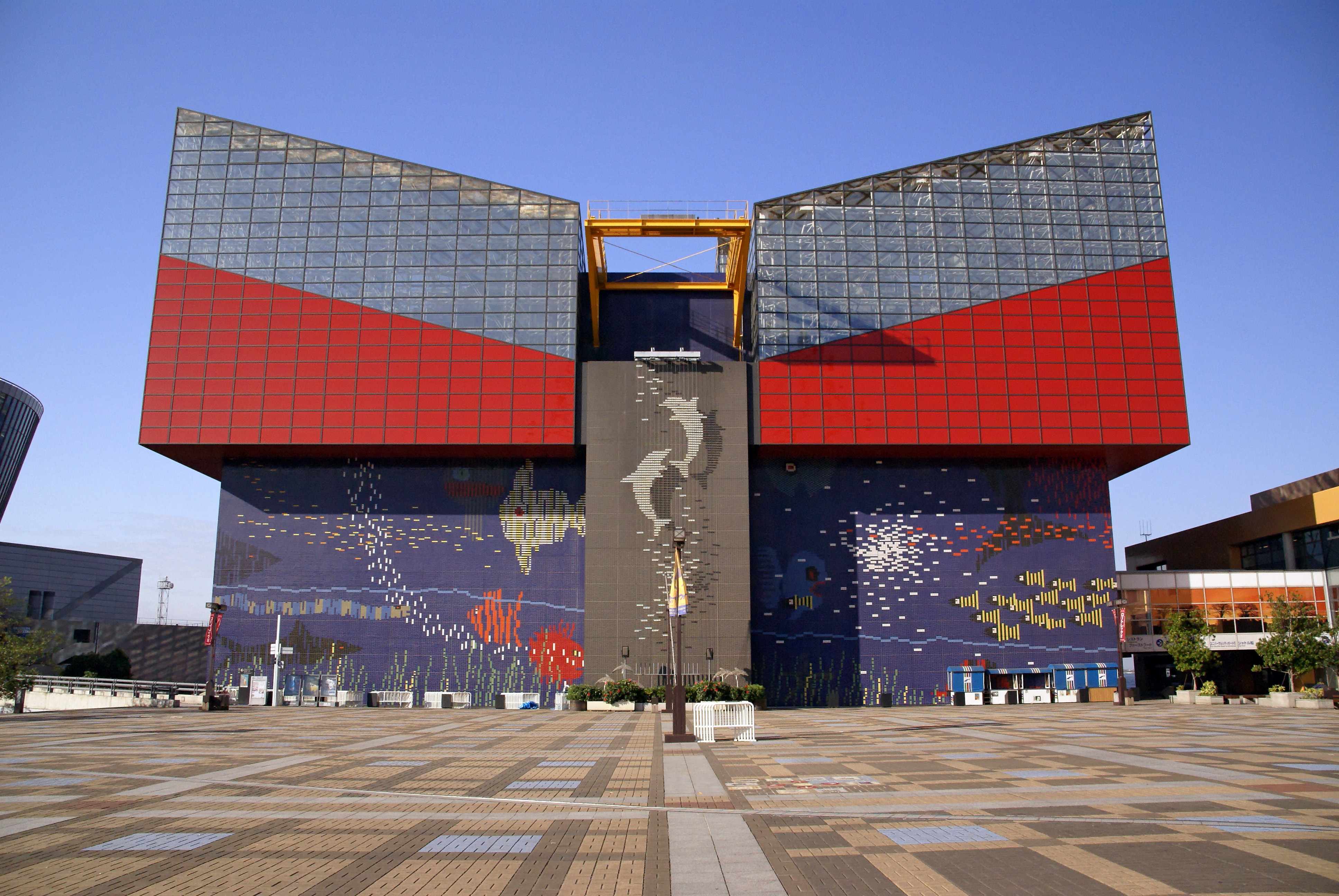by Heather Hopkins Clement
The Port of Osaka is the gateway to the cultural and historical heart of Japan—especially in the ancient capitals of Nara and Kyoto. There is an infinitesimal amount of Shinto shrines and Buddhist temples to be explored in the area, and I strongly encourage everyone to get out and explore!
However, if necessity dictates that you must stick close to the ship at Tempozan Pier, there are still some interesting things to do in Tempozan Harbor Villlage.
- Hours: 10:00 AM – 8:00 PM (last entrance 7:00 PM)
- Fees: 2,000 yen for adults 16 and over
- Tel.: (06) 6576 5501
- Website: www.kaiyukan.com
 Tempozan Marketplace – Stores in this complex include amusements such as Sega World, sit-down restaurants, fast food restaurants, and a variety of shops. There is an Internet service on the 3rd floor that charges 100 yen per 10 minutes. General Hours: 11:00 AM to 8:00 PM, but some locations close later. (Wheelchair accessible restrooms on the second floor in the food court area.)
Tempozan Marketplace – Stores in this complex include amusements such as Sega World, sit-down restaurants, fast food restaurants, and a variety of shops. There is an Internet service on the 3rd floor that charges 100 yen per 10 minutes. General Hours: 11:00 AM to 8:00 PM, but some locations close later. (Wheelchair accessible restrooms on the second floor in the food court area.)
- Hours: opens at 10:00 AM; last ticket sold at 9:30 PM
- Fee: 700 yen for age 3 and over
- Complete ride takes about 15 min.
Suntory Museum - This cultural complex features a Gallery for exhibitions and an IMAX® Theater with a gigantic 3-D screen, incorporated with a Museum Shop, café, and lounge.
- Hours: 10:30 AM – 7:30 PM
- Fee: 1,000 yen for adults; discounts for students and those 60 and over
A. KAIYUKAN Aquarium
B. Market Place(shops and restaurants)
C. Giant Ferris Wheel
D. Suntory Museum
E. Hotel Seagull Tempozan Osaka
F. Osaka Bay Cruise (Santa Maria)
G. Cruise to USJ port (Captain Line)
H. Tempozan Park including Mt. Tempozan, the lowest mountain in Japan
I. Cruise to Kobe, Shodoshima island and Takamatsu in Shikoku island
J. Tourist Information
K. KAIYUKAN Information (on the second floor of Entrance Building)
A - G, J and K: Tempozan Harbor Village


![map from tempozan to osakako_thumb[1] map from tempozan to osakako_thumb[1]](https://blogger.googleusercontent.com/img/b/R29vZ2xl/AVvXsEiurjlWTLfqgziN1l9e5rJXr7arhIindK77GMTdNBlPdWgZZAUxq9idyF6VNAQlKZ4w7UhksVwl1MVJNzQx1ebYwi-U-rON2GSkf_h4ScZKQHiz_hWH7kAZyNiwHFbBayaoS1ZH6zdde6g/?imgmax=800)







